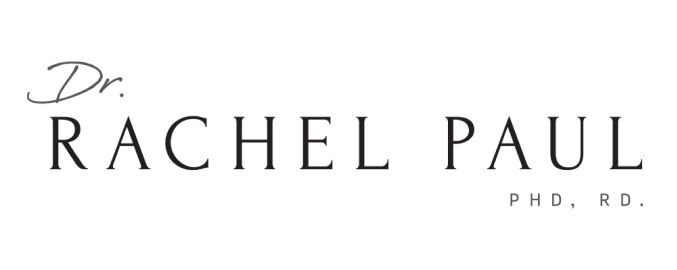
Similar to an acai bowl (if you’ve ever tried one), a smoothie bowl is simply a slightly thicker smoothie blend that’s eaten with a spoon in a bowl typically with toppings instead of drinking the smoothie with a straw. One of the best parts about smoothie bowls is the fact that even if you aren’t too crazy about the taste of the recipe itself, you can customize the added toppings to help meet your nutritional needs and help to make the bite even more enjoyable. Opting to eat a smoothie in a bowl can be an easy way to add in more nutrients like healthy fats or high protein in the form of toppings that you probably wouldn’t otherwise consume if sipping on a smoothie through a straw.
When making a smoothie bowl, one can usually expect to see a slightly thick and creamy texture along with the addition of toppings like fresh or frozen frozen mixed berries, shredded coconut, chia seeds, granola, peanut butter, chocolate chips, or dried fruit like raisins, craisins, or apricot.
Smoothie bowls are one of the healthy and convenient ways to get more protein to your diet, especially if you’re intentional about making it a high protein smoothie bowl.
Today, I’m sharing a high-protein smoothie bowl recipe that you can easily make at home.
High Protein Smoothie Bowl
Blueberry Pineapple Smoothie Bowl
251 CALORIES
Okay, so every smoothie bowl has a creamy base. In this high protein smoothie bowl, the base is a yummy blueberry pineapple smoothie blend that packs a mean 29g Carbs, 23g Protein, 5g Fat, 2g Fiber, and 0g Added Sugar. Impressive, right?! That’s 23 grams of protein before we even add any of the toppings.
Another thing I love about this smoothie bowl recipe is the fact that it’s super easy to make (seeing as how it’s just 3 ingredients)! So even if you’re not the best smoothie maker, there’s no way you can mess this one up! The flavor combination of blueberries and pineapple brings out a natural sweetness that you’re sure to love.
Here’s how to make the base.
Ingredients
½ cup Blueberries, frozen – 35 calories
½ cup Pineapple, frozen chunks, unsweetened – 47 calories
8 oz Greek Yogurt, plain, 2%, from tub – 170 calories
Instructions
Step 1
Mix all ingredients in a blender and blend, then pour into a bowl, add your toppings (if you prefer) & enjoy!
Step 2
No dairy? Use a dairy-free yogurt like one with an almond milk or oat milk base.
Now to get you going with the toppings, here are a few trusties you can add to make this an even more jammed pack high protein smoothie bowl recipe:
Fruit:
- frozen banana (sliced)
- frozen mixed berries
- Kiwi
- Dried strawberries or pineapples
Nuts and seeds:
- peanut butter (or some other nut butter, adds a natural plant based protein source)
- hemp seeds
- chia seeds
- shredded coconut
Granola or Oatmeal
How To Make High Protein Smoothie Bowl Without Protein Powder
Of course you can easily and simply make a high protein smoothie bowl with your favorite protein powder by throwing your favorite protein powder in a blender and blend it with ice or other frozen ingredients, pouring it into a bowl and adding your own toppings. BUT making a high-protein smoothie bowl without protein powder is also possible (Did you catch the fact that no protein powder was ever mentioned in the recipe I shared above?) when you opt for ingredients containing natural sources of protein.
Yes, even though I love a good excuse to add vanilla protein powder to new recipes, making a high protein smoothie bowl without protein powder is actually pretty easy. You’d be surprised!
Here’s my best advice for making it possible.
Tip #1: Use a high protein dairy source
- One of the key ingredients in any smoothie is the usage of a dairy product, whether that’s Greek yogurt, milk, or a combination of the two. Another powerhouse ingredient that’s high in protein that many wouldn’t automatically think to add would be cottage cheese. Yeah, I know it’s not my first ingredient to reach for either, but it packs about 11 grams of protein per 100g! So if protein is something you’re wanting to bump up, leave no stone unturned until you give it a try.
- But if you’re staying away from dairy, you’ll want to think about plant based ingredients that offer a high protein source such as soy milk or silken tofu. If you’re allergic to soy, almond milk, pea milk, or oat milk can also work.
Tip #2: Every ingredient counts!
- You can use a variety of high-protein ingredients to increase the protein content per serving. You’d be surprised. Even if you think the fruits and vegetables you choose only have for example 2 grams of protein per serving, every little bit adds up in the end. So when you’re building your smoothie blend, add in that extra fruit, veggie, or legume because every ingredient counts towards the bottom line.
- If you have a veggie smoothie, like the classic green smoothie, you might also consider adding chickpeas as a thickener for a hardier bite. It’s an excellent source of plant based protein, containing about 20 grams of protein per 100g. The recipe options are endless. The sky really is the limit!
Tip #3: Pile on some high protein toppings
- When all else fails, you can always bump up the protein intake with the addition of toppings. Great choices for toppings include adding flaxseeds, hemp seeds, chia seeds, peanut butter, or other nut butters to the mix, which work for a wide variety of both fruit and protein dominant smoothies.
On the search for other high protein meal ideas? Check out this round-up of tasty meal ideas to help you plan out healthy meals (other than smoothie bowls) that are high in protein.












